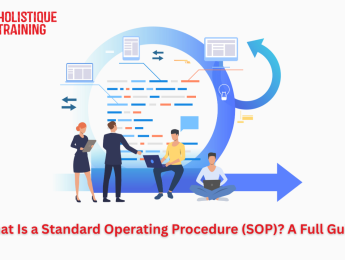- Table of Contents
- Introduction
- What Is Liquidity Risk?
- Timing Mismatch
- Unforeseen Events
- Market Conditions
- Asset-Liability Mismatch
- Credit Markets
- Regulatory Impact
- Confidence and Run Risk
- Liquidity Risk In Financial Institutions
- Deposit Withdrawals
- Loan Demand
- Asset-Liability Mismatch
- Market Conditions
- Regulatory Oversight
- Interconnectedness
- Contingent Liabilities
- How Does Liquidity Risk Look Like in Companies?
- Operating Cash Flow
- Market Conditions
- Credit Facilities
- Asset Liquidation
- Contingent Liabilities
- Capital Expenditures
- Working Capital Management
- Access to Funding Sources
- Regulatory Compliance
- Key Elements of the Liquidity Risk Framework
- 1. Cash Flow Analysis:
- 2. Funding Sources:
- 3. Risk Assessment:
- 4. Risk Tolerance:
- 5. Contingency Planning:
- 6. Monitoring and Reporting:
- 7. Improvement of Liquidity Management Tools:
- What Is Liquidity Risk Management?
- The Importance of Liquidity Risk Management
- Financial Stability:
- Operational Continuity:
- Confidence and Trust:
- Compliance and Regulation:
- Strategic Decision-Making:
- Risk Mitigation:
- Cost Management:
- Investor Relations:
- Regulator and Credit Rating Agency Relationships:
- Steps to Successful Liquidity Risk Management
- 1- Risk Identification
- 2- Quantitative Analysis:
- 3- Risk Assessment:
- 4- Establishing Risk Tolerance:
- 5- Developing Contingency Plans:
- 6- Diversification of Funding Sources:
- 7- Monitoring and Reporting:
- 8- Improvement of Liquidity Management Tools:
- The Role of Balance Sheet Management
- Asset-Liability Matching:
- Liquidity Buffers:
- Interest Rate Risk Management:
- Contingency Planning:
- Regulatory Compliance:
- Monitoring and Reporting:
- Challenges to Successful Balance Sheet Management
- Interest Rate Risk
- Asset Quality
- Data Accuracy
- Regulatory Compliance
- Market Volatility
- Example of Liquidity Risk
- Conclusion
Introduction
Liquidity risk is a concept that might sound familiar to those who have delved into the intricate world of finance and economics. It is the unseen current beneath the surface that can suddenly pull a financial institution or company under if not managed effectively. In this comprehensive blog post, we will embark on a journey to understand liquidity risk, its implications, and the vital role it plays in the financial landscape. We will explore liquidity risk in financial institutions and companies, discuss the key elements of the liquidity risk framework, delve into liquidity risk management, and shed light on the significance of balance sheet management. To illustrate the real-world impact, we'll conclude with an example of liquidity risk. So, fasten your seatbelts as we navigate the intricate waters of liquidity risk.
What Is Liquidity Risk?
At its core, liquidity risk encapsulates the vulnerability an entity faces due to a potential inability to access sufficient liquid assets or cash to meet its short-term financial obligations promptly. In simpler terms, it's the precarious situation where an organisation might run out of money when it's needed the most. This risk stems from the misalignment between the timing of cash outflows (money going out) and cash inflows (money coming in).
To truly appreciate the subtleties of liquidity risk, let's explore some of its facets:
Timing Mismatch
Liquidity risk is fundamentally about timing. It emerges when payments or obligations come due before an entity can gather the necessary funds to fulfil them. This could be a sudden surge in customer withdrawals from a bank, the need to pay off short-term debts as a corporation, or covering day-to-day operational expenses.
Unforeseen Events
Liquidity risk can be exacerbated by unexpected events. For instance, a natural disaster, a sudden economic downturn, or a global pandemic can severely disrupt cash flows, leaving organisations grappling to manage their liquidity.
Market Conditions
Economic factors play a significant role. Rapid changes in interest rates, shifts in investor sentiment, or volatile market conditions can influence the ease with which an entity can access cash or liquidate assets, thereby affecting liquidity.
Asset-Liability Mismatch
This occurs when an entity's assets and liabilities do not align in terms of maturity. If an entity is primarily funded by short-term deposits but has long-term illiquid investments, it might struggle to honour its obligations during a liquidity crisis.
Credit Markets
The state of credit markets also plays a role. During times of credit crunch, when lenders become more cautious, securing additional financing can be challenging, amplifying liquidity risk.
Regulatory Impact
Liquidity risk is intertwined with regulatory requirements. Financial institutions, in particular, are often subject to stringent liquidity regulations that mandate the maintenance of minimum levels of liquid assets. Failing to meet these requirements can result in penalties and reputational damage.
Confidence and Run Risk
In the case of banks, customer confidence is paramount. If depositors lose faith in a bank's ability to honour withdrawals, it can trigger a "bank run," where a large number of depositors rush to withdraw their funds simultaneously, potentially causing a liquidity crisis.
In essence, liquidity risk is like a lurking iceberg in the financial sea. What appears manageable on the surface can become a perilous threat when unforeseen circumstances or mismanagement disrupt the delicate balance between cash inflows and outflows. Understanding and effectively managing this risk is essential to ensure the stability and resilience of financial institutions and companies alike.
Liquidity Risk In Financial Institutions
Financial institutions, such as banks, credit unions, and other lending entities, are the backbone of the financial system. They play a pivotal role in facilitating the flow of funds within the economy. However, they are particularly susceptible to liquidity risk due to the nature of their operations.
In financial institutions, liquidity risk can manifest in several critical ways:
Deposit Withdrawals
Banks primarily rely on customer deposits as a source of funds for their lending activities. However, these deposits are typically demand deposits, meaning customers can withdraw their funds at any time without notice. A sudden surge in customer withdrawals can rapidly deplete a bank's available cash, making it challenging to meet withdrawal demands. This scenario is often referred to as a "liquidity run."
Loan Demand
Financial institutions thrive on lending money to individuals, businesses, and other borrowers. When there's a spike in loan requests or a significant drawdown on existing credit lines, the institution might find itself in a situation where it must provide substantial funds on short notice. If the bank's reserves are insufficient, it can lead to liquidity stress.
Asset-Liability Mismatch
Financial institutions carefully manage their balance sheets, but sometimes they can face an asset-liability maturity mismatch. For instance, if a bank funds long-term loans with short-term deposits, it faces the risk that when depositors want their money back, the bank may struggle to liquidate its longer-term assets quickly.
Market Conditions
The financial markets' dynamics significantly impact financial institutions' liquidity risk. For example, sudden interest rate changes can affect the value of their assets and liabilities, potentially leading to losses or funding difficulties. Additionally, a decline in market confidence or a credit rating downgrade can impede a bank's ability to access short-term funding sources.
Regulatory Oversight
Financial institutions operate within a highly regulated environment, especially when it comes to liquidity risk management. Regulators often set specific liquidity requirements and ratios that institutions must adhere to. These requirements aim to ensure that banks maintain adequate liquidity buffers to withstand adverse scenarios, such as financial crises.
Interconnectedness
Financial institutions are deeply interconnected. A liquidity problem at one institution can quickly spread to others, leading to a domino effect. This interconnectedness amplifies systemic risk, which can have severe implications for the broader financial system.
Contingent Liabilities
Financial institutions often have contingent liabilities in the form of lines of credit, guarantees, and derivatives contracts. These contingent liabilities can become actual cash outflows under certain conditions, adding an extra layer of complexity to liquidity risk management.
Table 1: Sources of Liquidity Risk in Financial Institutions
Source of Liquidity Risk | Description |
Deposit Withdrawals | A sudden surge in customer withdrawals can deplete a bank's available cash, making it challenging to meet withdrawal demands. |
Loan Demand | If a bank experiences a surge in loan requests during a period of limited available funds, it may struggle to meet the demand. |
Asset-Liability Mismatch | A mismatch between the maturity of assets (e.g., loans) and liabilities (e.g., deposits) can lead to a liquidity crunch. If short-term liabilities must be paid off with long-term assets, the bank may face difficulties. |
How Does Liquidity Risk Look Like in Companies?
Companies, regardless of their size, industry, or sector, face liquidity risk as a fundamental aspect of their financial operations. Liquidity risk in the corporate context revolves around the ability of a company to meet its short-term financial obligations without incurring significant losses or disruptions to its operations. Here, we'll delve deeper into the various facets and challenges of liquidity risk faced by companies:
Operating Cash Flow
One of the primary sources of liquidity for companies is their operating cash flow. This consists of the cash generated from the core business operations. Liquidity risk arises when a company's operating cash flow is insufficient to cover its short-term obligations, which may include payroll, rent, supplier payments, and interest on debt. Inadequate cash flow can lead to difficulties in meeting these essential financial commitments.
Market Conditions
External economic factors and market conditions can significantly impact a company's liquidity. For example, a sudden economic downturn or a decrease in consumer spending can lead to a decline in revenue, affecting a company's ability to generate cash. Changes in market dynamics may also make it more challenging to access credit or secure additional financing when needed.
Credit Facilities
Companies often rely on credit facilities, such as lines of credit or short-term loans, to manage their liquidity needs. However, dependence on these credit sources without a backup plan can increase liquidity risk. If credit becomes less available or more expensive, a company may find it difficult to access these funds when necessary.
Asset Liquidation
Liquidity risk is also associated with the ease with which a company can sell its assets when required. Some assets, such as real estate or specialised machinery, may be illiquid and not easily convertible into cash. In a liquidity crisis, the inability to quickly liquidate assets can hinder a company's ability to generate the cash needed to meet its obligations.
Contingent Liabilities
Similar to financial institutions, companies may have contingent liabilities, including guarantees, warranties, or legal settlements. These contingent liabilities can become actual cash outflows under specific conditions, adding complexity to liquidity risk management.
Capital Expenditures
Companies must balance their capital expenditures (CapEx) with their available liquidity. Overspending on CapEx projects can tie up cash that might be needed for day-to-day operations or to cover unforeseen financial obligations.
Working Capital Management
Effectively managing working capital is essential for liquidity risk management. This involves optimising the levels of cash, accounts receivable, and inventory to ensure that the company has enough liquid assets to meet its obligations.
Access to Funding Sources
A company's ability to access funding sources in the capital markets, such as issuing bonds or equity, can also impact liquidity. Market conditions, investor sentiment, and the company's credit rating play a role in determining the cost and availability of these funding sources.
Regulatory Compliance
Companies must comply with various financial regulations and accounting standards that may affect their liquidity risk reporting and management. Non-compliance can lead to legal and financial repercussions.
Key Elements of the Liquidity Risk Framework
Understanding liquidity risk necessitates a grasp of its foundational components. Let's break down the key elements of the liquidity risk framework:
1. Cash Flow Analysis:
Cash flow analysis is the cornerstone of liquidity risk management. It involves assessing the timing and predictability of cash flows into and out of the organisation. This includes not only operating cash flows but also cash flows from investments, financing activities, and other sources.
Cash Flow Forecasting
Accurate cash flow forecasting is crucial. Organisations must project their cash flows over various time horizons, considering both normal operating conditions and stress scenarios. This helps identify periods of surplus and scarcity.
Seasonal Variations
Recognising seasonal variations in cash flows is essential. Many businesses experience fluctuations in revenue and expenses at different times of the year, which can impact liquidity.
Contingency Planning
Cash flow analysis should also involve contingency planning. Organisations must consider what would happen in the event of unexpected disruptions or adverse market conditions.
2. Funding Sources:
Identifying and diversifying funding sources is vital for managing liquidity risk effectively. Organisations need to know where their cash is coming from and have a plan for accessing funds when needed.
Diversification
Overreliance on a single source of funding can be risky. Diversifying funding sources can reduce the organisation's vulnerability to disruptions in any one area.
Credit Facilities
Credit lines and loan agreements are essential sources of liquidity for many organisations. Managing these relationships and understanding the terms and conditions is crucial.
Access to Capital Markets
For publicly traded companies, access to capital markets through the issuance of stocks and bonds is an important consideration. Market conditions and investor sentiment can affect the cost and availability of these funding sources.
3. Risk Assessment:
Assessing the potential liquidity risk and its impact is a fundamental step. Organisations must quantify the potential impact of liquidity risk and its likelihood, considering various scenarios and stress tests.
Scenario Analysis
Scenario analysis involves modelling different potential scenarios, including adverse economic conditions, changes in market sentiment, or operational disruptions. This helps evaluate how these scenarios might affect liquidity.
Stress Testing
Stress testing involves simulating extreme adverse scenarios to assess the organisation's resilience. For example, stress tests can assess how a sudden economic downturn or a liquidity run would impact liquidity.
4. Risk Tolerance:
Defining acceptable levels of liquidity risk is essential. This step involves determining the organisation's risk appetite and aligning it with its strategic goals.
Risk Appetite Statement
Organisations often formalise their risk tolerance in a risk appetite statement. This document outlines the level of risk the organisation is willing to accept in pursuit of its objectives.
Alignment with Strategy
It's crucial to ensure that the risk tolerance aligns with the organisation's strategic goals. For example, a growth-oriented company might accept higher liquidity risk to fund expansion plans.
5. Contingency Planning:
Developing contingency plans for addressing liquidity shortfalls is an essential element of the liquidity risk framework.
Alternative Funding Sources
Contingency plans should identify alternative sources of funding that can be tapped in times of need. These sources could include emergency credit lines, asset sales, or strategic partnerships.
Communication Protocols
Clear communication protocols should be established. In a liquidity crisis, rapid communication with internal and external stakeholders, including lenders, investors, and regulators, is critical.
6. Monitoring and Reporting:
Continuously monitoring liquidity metrics and reporting them to relevant stakeholders, including regulators, is crucial for staying ahead of liquidity risk.
Key Metrics
Monitoring liquidity metrics such as the current ratio, quick ratio, cash flow coverage ratios, and liquidity gaps helps assess the organisation's liquidity position.
Regulatory Compliance
Financial institutions, in particular, must ensure compliance with regulatory requirements related to liquidity risk reporting and management. Non-compliance can lead to penalties and reputational damage.
7. Improvement of Liquidity Management Tools:
Investing in technology and tools to enhance liquidity forecasting and management capabilities is an ongoing process. Based on a recent survey conducted by AITE-Sybase, as mentioned in an article by SWIFT, automated systems and processes are responsible for collecting just 5% of liquidity risk management data.
Advanced Analytics
Leveraging advanced analytics and modelling techniques can improve the accuracy of cash flow forecasts and risk assessments.
Liquidity Stress Testing Software
Specialised software can facilitate stress testing and scenario analysis, providing valuable insights into the organisation's resilience to adverse events.
What Is Liquidity Risk Management?
Liquidity risk management is the systematic and proactive process through which organisations identify, assess, monitor, and mitigate the risks associated with their liquidity position. It is not merely about having cash on hand but encompasses a range of strategies and practices aimed at ensuring that an entity can meet its short-term financial obligations efficiently and effectively, even in adverse conditions.
The Importance of Liquidity Risk Management
Effective liquidity risk management is a cornerstone of financial stability and operational continuity for organisations, whether they are financial institutions, corporations, or any other entity engaged in economic activities. Here's why liquidity risk management is of paramount significance:
Financial Stability:
At its core, liquidity risk management is about ensuring that an organisation has enough cash or easily liquidated assets to meet its short-term financial obligations as they come due. This fundamental capability is a bedrock of financial stability. Without it, an organisation risks insolvency, which can have catastrophic consequences, including bankruptcy.
Operational Continuity:
Adequate liquidity is essential to maintain day-to-day operations. For a corporation, this means being able to pay employees, suppliers, and utility bills promptly. For a financial institution, it means being able to honour customer withdrawals and process transactions without disruptions. Any interruption in these essential operations can result in reputational damage, loss of customer trust, and regulatory scrutiny.
Confidence and Trust:
Confidence and trust are intangible but invaluable assets for any organisation. Stakeholders, including customers, investors, and regulators, rely on the organisation's ability to manage liquidity risk effectively. Demonstrating this capability inspires confidence and trust, which are crucial for attracting and retaining customers, investors, and business partners.
Compliance and Regulation:
Many financial institutions are subject to strict regulatory requirements related to liquidity risk management. Non-compliance can result in significant penalties and legal repercussions. Even organisations outside the financial sector must adhere to accounting standards and financial regulations that require disclosure and management of liquidity risk. Meeting these regulatory obligations is essential to avoid legal and financial consequences.
Strategic Decision-Making:
Effective liquidity risk management enables organisations to make strategic decisions with confidence. It allows them to seize growth opportunities when they arise and navigate through economic downturns with resilience. Organisations with strong liquidity positions are better positioned to invest in research and development, expand their market share, and pursue strategic acquisitions.
Risk Mitigation:
By identifying and mitigating liquidity risk, organisations reduce the likelihood of insolvency or financial distress. This not only protects shareholders and investors but also safeguards employees' jobs and ensures business continuity. Adequate liquidity also provides a buffer against unforeseen events, such as economic crises or global pandemics, which can disrupt normal operations.
Cost Management:
Effective liquidity risk management can result in cost savings. Organisations that maintain sufficient cash reserves or access to low-cost financing are better equipped to take advantage of investment opportunities or negotiate favourable terms with suppliers and lenders. This cost-efficiency can translate into a competitive advantage.
Investor Relations:
For publicly traded companies, liquidity risk management plays a crucial role in investor relations. Investors closely monitor a company's liquidity position, as it directly impacts dividend payments, share buybacks, and overall financial health. A strong liquidity position can attract a more favourable valuation from investors.
Regulator and Credit Rating Agency Relationships:
Organisations that demonstrate proactive liquidity risk management often have better relationships with regulators and credit rating agencies. Positive relationships with these stakeholders can result in more favourable regulatory treatment and credit ratings, which, in turn, can reduce borrowing costs and enhance access to capital.
Steps to Successful Liquidity Risk Management
1- Risk Identification
The first step in liquidity risk management is to identify and understand the various sources of liquidity risk that an organisation may face. These risks can range from operational issues, changes in market conditions, and regulatory changes to unexpected external events, such as natural disasters or economic crises. A comprehensive risk identification process involves assessing both internal and external factors that can impact liquidity.
2- Quantitative Analysis:
Once risks are identified, organisations must quantify their liquidity risk exposure. This involves using quantitative models and metrics to measure the potential impact of liquidity risk events. Common quantitative measures include liquidity ratios (e.g., current ratio, quick ratio), cash flow coverage ratios, and liquidity gaps.
- Accurate cash flow forecasting is essential. Organisations must project cash flows over various time horizons, considering different scenarios and stress tests to assess potential liquidity shortfalls.
3- Risk Assessment:
After quantifying liquidity risk exposure, organisations need to assess the likelihood of these risks materialising. This includes considering the probability of various scenarios and the potential severity of their impact on liquidity. Scenario analysis and stress testing are valuable tools for risk assessment.
- Stress testing involves modelling extreme scenarios, such as economic downturns, market shocks, or sudden operational disruptions. Stress tests help assess the organisation's resilience under adverse conditions.
4- Establishing Risk Tolerance:
Organisations should define their acceptable levels of liquidity risk, often formalised in a risk appetite statement. This statement outlines the level of liquidity risk the organisation is willing to tolerate to achieve its strategic objectives. It should align with the organisation's overall risk management framework.
- It's crucial to ensure that risk tolerance aligns with the organisation's strategic goals. Different organisations may have varying risk appetites based on factors such as growth objectives and risk capacity.
5- Developing Contingency Plans:
Contingency planning involves creating a set of actions to be taken in the event of liquidity shortfalls or unexpected liquidity stress. These plans should identify alternative funding sources, such as emergency credit lines, asset sales, or strategic partnerships.
- Contingency plans should include clear communication protocols to ensure that relevant stakeholders are informed and can respond promptly in a liquidity crisis. This includes communication with internal teams, lenders, investors, and regulators.
6- Diversification of Funding Sources:
To mitigate liquidity risk, organisations should avoid overreliance on a single source of funding. Diversifying funding sources provides resilience and flexibility in the face of changing market conditions.
- Diversification includes tapping into various channels for liquidity, including operating cash flow, credit facilities, capital markets, and asset sales.
7- Monitoring and Reporting:
Liquidity risk is dynamic, and its assessment should be ongoing. Organisations must continuously monitor liquidity metrics and report them to relevant stakeholders, including regulators, investors, and senior management.
- Regularly monitoring liquidity metrics helps assess the organisation's liquidity position. Metrics such as the current ratio, quick ratio, and cash flow coverage ratios provide valuable insights.
- For financial institutions, ensuring compliance with regulatory requirements related to liquidity risk reporting and management is critical. Non-compliance can result in penalties and legal consequences.
8- Improvement of Liquidity Management Tools:
As technology advances, organisations should invest in tools and systems that enhance liquidity forecasting and management capabilities. These tools can improve the accuracy of cash flow forecasts and enhance risk assessment.
- Leveraging advanced analytics and modelling techniques can provide more accurate insights into liquidity risk and stress testing outcomes.
- Specialised software can facilitate stress testing and scenario analysis, allowing organisations to assess their resilience to adverse events more effectively.
The Role of Balance Sheet Management
Balance sheet management plays a pivotal role in an organisation's liquidity risk management strategy. The balance sheet serves as a financial snapshot that depicts the entity's assets, liabilities, and equity at a given point in time. Effective balance sheet management helps align the timing and maturity of assets and liabilities, ensuring that an organisation can meet its short-term obligations without compromising its long-term financial health.
Here are key aspects of the role of balance sheet management in liquidity risk management:
Asset-Liability Matching:
One of the primary objectives of balance sheet management is to achieve effective asset-liability matching. This means aligning the maturity and liquidity of assets with the timing of liabilities. For instance, if an organisation primarily relies on short-term deposits as a source of funding, it should ensure that a significant portion of its assets can be readily converted into cash to meet those short-term obligations.
- Balance sheet managers often use a "liquidity ladder" approach, which categorises assets and liabilities into different time buckets based on their maturity. This allows them to visualise and manage the timing of cash inflows and outflows.
- Failure to achieve asset-liability matching can result in liquidity risk. If an organisation's liabilities mature before its assets, it may struggle to meet its obligations, potentially leading to financial distress.
Liquidity Buffers:
Balance sheet management involves maintaining liquidity buffers, such as cash reserves or highly liquid assets. These buffers serve as a safety net during periods of liquidity stress. Having readily available liquidity can help an organisation bridge temporary shortfalls and avoid disruptions to its operations.
- Maintaining cash reserves on the balance sheet is a common liquidity management practice. These reserves can be quickly accessed to cover immediate cash needs.
- Investments in highly liquid assets, such as short-term government securities or marketable securities, can also serve as part of a liquidity buffer.
Interest Rate Risk Management:
Balance sheet management is not only about liquidity but also about interest rate risk. Interest rate movements can impact the value of assets and liabilities differently, potentially leading to changes in the organisation's net interest income and its ability to generate cash.
- Balance sheet managers may employ interest rate hedging strategies to mitigate the impact of interest rate risk. This can involve using derivatives or adjusting the composition of the balance sheet to reduce exposure to interest rate fluctuations.
Contingency Planning:
In the context of balance sheet management, contingency planning is essential. Balance sheet managers should develop contingency plans that outline actions to be taken in the event of unexpected liquidity shortfalls. These plans should consider alternative funding sources and asset liquidation strategies.
- Contingency plans often include guidelines for selling assets quickly if needed to raise cash. However, this should be done strategically to avoid fire sales that could result in asset devaluation.
- Balance sheet managers should have a clear understanding of the organisation's access to credit facilities, such as lines of credit or emergency loans, in times of need.
Regulatory Compliance:
Regulatory requirements related to liquidity risk management often impact balance sheet management practices. Financial institutions, in particular, must adhere to regulatory standards that mandate the maintenance of minimum levels of liquid assets.
- The LCR is a common regulatory requirement that sets the minimum level of high-quality liquid assets a financial institution must hold to cover its short-term net cash outflows under stress scenarios.
Monitoring and Reporting:
Balance sheet managers must continuously monitor and report on liquidity-related metrics and compliance with regulatory requirements. This includes regularly assessing the composition of assets and liabilities, tracking liquidity ratios, and ensuring that contingency plans are up-to-date and effective.
Challenges to Successful Balance Sheet Management
While balance sheet management is crucial for effective liquidity risk management, it comes with its set of challenges:
Interest Rate Risk
Managing interest rate risk is complex, as changes in rates can impact the value of assets and liabilities differently, potentially leading to liquidity imbalances.
Asset Quality
Ensuring the quality of assets on the balance sheet is challenging, as economic conditions and market factors can affect their value.
Data Accuracy
Accurate and timely data is essential for balance sheet management. Any discrepancies or delays can hinder decision-making.
Regulatory Compliance
Staying compliant with regulatory requirements, especially in the context of liquidity risk, can be resource-intensive.
Market Volatility
External factors such as economic downturns or geopolitical events can introduce unpredictability into balance sheet management.
Example of Liquidity Risk
To illustrate the real-world implications of liquidity risk, consider the case of a medium-sized manufacturing company, XYZ Manufacturing Inc. XYZ has been operating smoothly for several years, relying on a combination of operating cash flow and short-term credit facilities to meet its financial obligations.
However, a sudden economic downturn impacts XYZ's industry. Demand for its products plummets, causing a significant decline in revenue. Simultaneously, several suppliers tighten their credit terms, requiring faster payment for raw materials. XYZ's operating cash flow is no longer sufficient to cover its expenses, including payroll, supplier payments, and loan obligations.
In this scenario, XYZ Manufacturing Inc. faces acute liquidity risk. It lacks the necessary cash reserves or easily liquidated assets to meet its immediate obligations. Without effective liquidity risk management and contingency planning, the company could face financial distress, possible bankruptcy, and damage to its reputation.
Conclusion
In the ever-evolving financial landscape, liquidity risk remains a constant challenge for both financial institutions and companies. Understanding its intricacies, sources, and management strategies is essential for maintaining financial stability, operational continuity, and regulatory compliance.
Liquidity risk management is a multifaceted process that involves identifying risk sources, assessing exposure, and implementing robust strategies to ensure an entity's resilience in the face of adversity. Balance sheet management plays a pivotal role in this process, but it comes with its set of challenges, including interest rate risk and regulatory compliance.
To navigate the waters of liquidity risk successfully, entities must remain vigilant, continuously monitor their liquidity metrics, and adapt their strategies to changing economic conditions. If you're eager to delve deeper into this crucial aspect of financial management, make sure to enrol in our comprehensive course on Liquidity Risk Management to gain the expertise needed to navigate the dynamic world of finance with confidence.

























